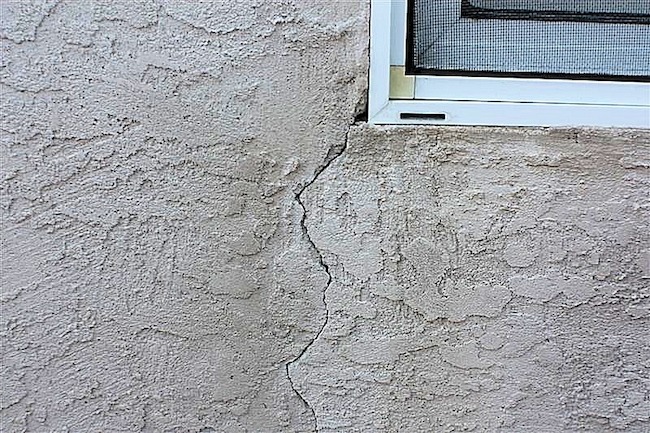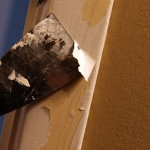How to Prepare Stucco for Painting

Stucco should be pressure washed to remove dirt, dust, mildew, algae and chalk to produce a sound surface and good adhesion for the finish coat.
Soft washing is a good technique to use because it is gentle on the surface and does not force water under high-pressure to leak through window and door openings.
Soft washing with a pressure washer using bleach is usually all that is needed to kill the mildew or the algae. This solution is applied using a pressure washer with a very wide tip which allows a low pressure stream of water.
If the stucco is chalky you can add an “emulsifier” to the bleach and water in order to help release the chalk as it is gently rinsed. If the chalking is excessive then a light pressure stripping is required. A medium size tip held about 2 feet away from the surface will remove the chalk.
You want to avoid applying the stucco paint on a chalky surface because it will cling to the chalk and not be able to penetrate all the way to the sound surface.
Mineral stains cannot be removed completely by pressure washing. These are stains left by rusty nails or copper roofs or even metal screens that are in the windows. These stains should be primed with a quality acrylic primer that is designed to seal the stain.
If there are large cracks or bulging stucco, these areas must be re-stuccoed. Stucco repair involves a three coat application process. A first coat which is called a brown coat, a second coat called a scratch coat, and finally the finish coat of stucco.
If there are medium size cracks, 1/8 inch to ¼ inch, then these are caulked with a textured caulk. When applying this textured caulk try to fill the crack only without allowing any excess to remain on the adjacent surfaces. While the caulk is still wet you can do a process called “wet wiping”. This is done by wiping off all the excess caulk with a dry paint brush and water so that the caulk remains only in the crack and is erased from all of the adjacent surfaces.
If there are small holes or small chips in the stucco they can be repaired with “stucco patch.” If there are small spider vein cracks then a high quality elastomeric paint should be used.
Elastomeric paint is thicker and able to fill the small cracks. These should be no bigger than 1/32nd of an inch or less.
Having pressure washed the surface, repaired stucco bulges and large cracks by re-stuccoing, filled medium size cracks with textured caulk, small holes and chipping with stucco patch, and spider veins filled using elastomeric paint this is back rolled, you are now ready to paint the stucco.
KEN AXT





